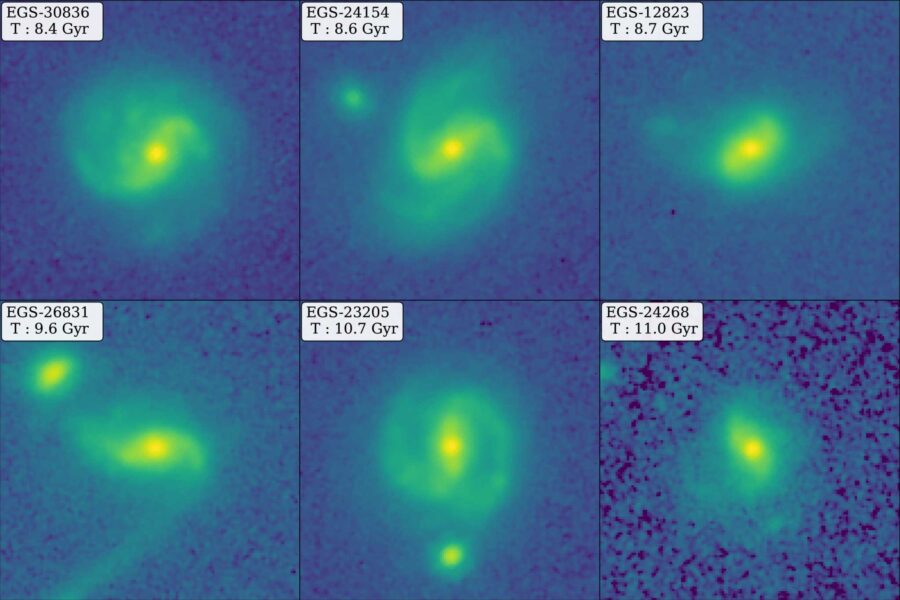James Webb Telescope reveals unexpected galaxy maturity just 500 million years post-Big Bang.At the 241st American Astronomical Society meeting in Seattle, Washington, astronomers presented new findings showing that the James Webb Space Telescope (JWST) is uncovering numerous ancient galaxies, more mature and abundant than anticipated. This discovery challenges existing theories about the formation of the first galaxies and could lead to significant updates in our understanding of cosmic evolution. Jeyhan Kartaltepe of the Cosmic Evolution Early Release Science (CEERS) collaboration shared that JWST is observing galaxies from as far back as 500 million to 2 billion years after the Big Bang, representing the earliest cosmic history yet observed in such detail.
Previously, the Hubble Space Telescope offered glimpses of ancient galaxies, appearing as vague “smudges” due to the limited sharpness and wavelength range Hubble could detect. Webb’s infrared capabilities, however, allow astronomers to capture images with much greater clarity and at greater distances, reaching deeper into cosmic history. With this expanded range, CEERS identified 850 galaxies within Webb’s survey data and classified them into three main shapes: “disk,” “spheroid,” or “irregular.” These early galaxies were found to be remarkably similar in shape to present-day ones, although they exhibit a level of turbulence and instability not seen in nearby galaxies like the Milky Way.
While disk-shaped galaxies in modern times are thought to form in relatively peaceful environments, JWST’s findings reveal that disk-shaped galaxies already existed in these early epochs of the universe, a discovery that Kartaltepe noted was like finding “teens when expecting toddlers.” She explained that these young galaxies display a surprising level of organization and structure despite existing in an era of rapid star formation and galactic mergers.
In another finding, Haojing Yan from the University of Missouri reported on galaxies from an even earlier period, around 200 to 400 million years after the Big Bang, discovered in JWST’s images behind the galaxy cluster SMACS 0723. These galaxies, whose distances are still awaiting spectroscopic confirmation, are likely among the most ancient ever detected. Even if only half of Yan’s estimated galaxies prove to be authentic distant galaxies, their high numbers would already exceed what current galaxy formation models predict. As Yan summarized, “Our previously favored
Jordan Mirocha from the Jet Propulsion Laboratory, speaking later, suggested that a combination of complex factors likely accounts for the abundance and brightness of these early galaxies. He theorizes that rapidly forming dark matter halos and the inflow of hydrogen gas may have disrupted the processes that normally slow down star formation. While intense star formation in these galaxies would have made them exceptionally bright, it also likely produced dust that eventually dimmed them. Balancing these dynamics—dark matter, hydrogen gas inflows, and stellar feedback—will be essential to accurately model early galaxy formation and evolution.

These groundbreaking observations, made possible by JWST, are forcing scientists to reconsider previous assumptions about how galaxies evolve. Future research will explore the influence of dark matter, the role of dust, and the factors influencing galaxy brightness to build a clearer picture of how galaxies emerged in the first billion years of the universe.















No comments